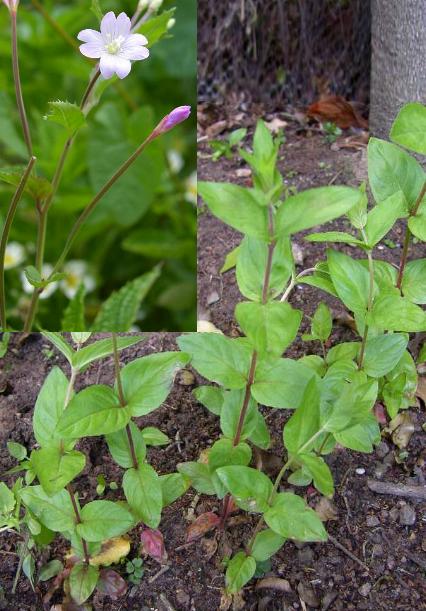Broad-leaved WillowherbScientific Name: Epilobium montanum |
Perennial, speading by seed which are carried by the wind from the upright seed
pods, as they split lengthwise and curl open - although most fall close to the parent plant. The leaves are finely toothed with no hairs, arranged alternately near the top of the stem and opposite lower down. The round stem is hairless, but no has raised lines and dies away in the late autumn. The plant overwinters as leafy buds at ground level and start into growth early in the spring (bottom picture). Some of the buds grow sideways on the surface and take root to form a larger clump in subsequent years.
One of the problem weeds in borders and on paths; often found in cracks, crevices and in gutters which provides a perfect launchpad for the seed. The early shoots can be difficult to distinguish from other plants in ornamental borders, especially when they germinate in the centre of clumps or close by, as the floating seed get trapped in the foliage.
The flowers open from June to August - small pale pink at the tip of a slender ovary. The four petals have a deep notch and the stigma has four lobes. After maturity the fruit splits open to release the pappus which carries the seed.
The height can be up to 60cm in good growing conditions, but is usually about 35cm.
The plants ale easily uprooted and the adventitious roots will not regrow provided the growth point is removed. The stem snaps easily at soil level and regrows with 3 or 4 new shoots if left behind. When hoeing ensure that the blade cuts below soil level. Any uprooted or severed plants should not be left lying around as there will be enough sap to open mature seedheads to release the seed.
Weedkillers to use:-
Paraquat, Diquat kills top growth on contact, use at seedling stage.
Glyphosate or a selective herbicide, kill the whole plant, but if in flower the seedheads may mature before the plant dies away.
Follow these links for further details on Weeds, Weed Removal and Weed Prevention.


